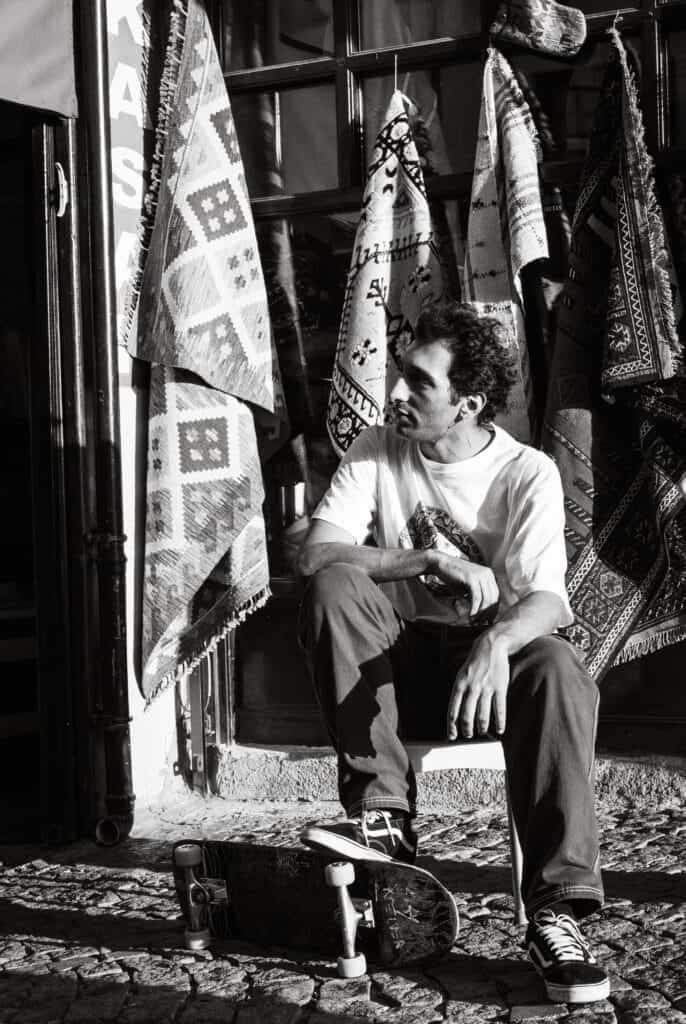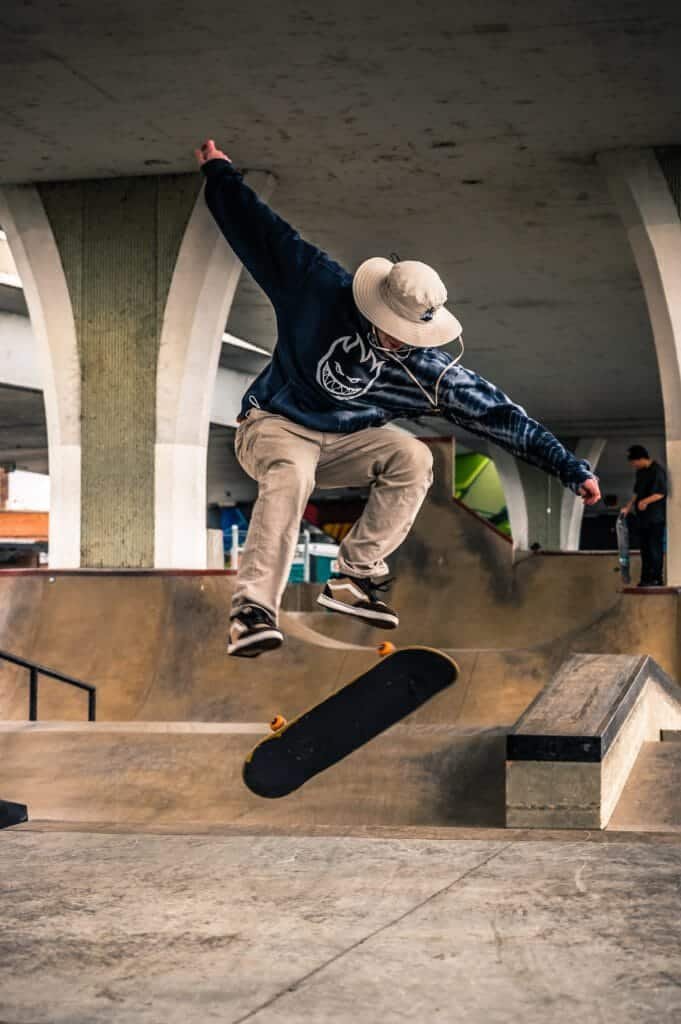If you’ve been hitting the skatepark lately and find yourself yearning for more control over your skateboard, you’re in the right place. Whether you’re a beginner looking to fine-tune your skills or an experienced skater seeking to take your control to the next level, this article is here to guide you. From mastering your balance to honing in on those intricate foot movements, we’ve got the inside scoop on how you can improve your skateboarding control and become the envy of the park. So grab your board, tighten those trucks, and let’s get rolling!
1. The Importance of Skateboarding Control
Skateboarding control is of utmost importance when it comes to improving your skills and enjoying a safe and fulfilling skateboarding experience. Control refers to the ability to maneuver the skateboard effectively, maintaining balance, stability, and executing tricks with precision. By understanding the role of control and the benefits it brings, you can work towards enhancing your skateboarding prowess.
1.1 Understanding the Role of Control
Control is the foundation upon which skateboarding skills are built. Without control, it becomes difficult to navigate the skateboard, execute tricks, and maintain balance. Control allows you to have confidence in your movements and make split-second adjustments to maintain stability. It is the key to unlocking the full potential of your skateboarding abilities and expanding your repertoire of tricks.
1.2 Benefits of Improving Skateboarding Control
Improving skateboarding control offers numerous benefits for both beginners and seasoned skaters alike. With enhanced control, you can confidently explore different skateboarding terrains, push your limits, and tackle more complex tricks. It also helps prevent accidents and injuries as you will be able to react quickly and stabilize yourself when faced with unexpected obstacles or challenges. Additionally, skateboarding control promotes better body awareness, coordination, and overall athleticism.
2. Proper Foot Positioning
Proper foot positioning is crucial for maintaining balance, control, and executing tricks effectively. By understanding the correct placement of your front and back foot, you can optimize your skateboarding performance.
2.1 Positioning the Front Foot
The front foot plays a vital role in steering and controlling the skateboard. Position it perpendicular to the skateboard, with the ball of your foot near the middle or slightly behind the front bolts. This positioning provides stability and gives you better control over the board’s movements. Experiment with adjusting your front foot position slightly until you find what feels most comfortable and allows for optimal control.
2.2 Positioning the Back Foot
The back foot is responsible for generating power and controlling the board’s tail. Place it diagonally across the tail, with the toes slightly hanging off the edge. This positioning allows for better leverage when executing tricks and helps in maintaining balance while riding. Again, find a position that feels natural to you and allows for maximum control over the skateboard.
2.3 Practicing Correct Foot Placement
To improve and reinforce proper foot positioning, spend time practicing correct placement both while stationary and while riding. Start by standing on the skateboard and getting comfortable with the sensation of having your feet in the correct position. Practice shifting your weight and maintaining balance. As you progress, try maintaining correct foot positioning while riding and executing basic maneuvers. Consistent practice will help ingrain the correct foot placement in muscle memory, leading to better overall control.

3. Maintaining Balance and Stability
Maintaining balance and stability is a fundamental aspect of skateboarding control. By strengthening your core muscles, utilizing knee bend and flexibility, and incorporating exercises like yoga and balance boards, you can significantly improve your ability to stay balanced on the skateboard.
3.1 Strengthening Core Muscles
A strong core is essential for maintaining balance and stability while skateboarding. Incorporate exercises that target your abdominal, back, and hip muscles into your regular workout routine. Planks, Russian twists, and leg raises are great examples of exercises that can help strengthen your core. By having a solid foundation of core strength, you will be better equipped to maintain balance and control.
3.2 Utilizing Knee Bend and Flexibility
Bending your knees is crucial for maintaining stability while skateboarding. When riding, keep your knees slightly bent to absorb shocks and adjust to changes in terrain. This position lowers your center of gravity and provides a stable base for maneuvering the skateboard. Additionally, focus on developing flexibility in your ankles, hips, and lower back, as increased range of motion in these areas will enhance your ability to maintain balance.
3.3 Improving Balance through Yoga and Balance Boards
Incorporating yoga poses and balance board exercises into your skateboarding training regimen can significantly improve your balance and stability. Practices like tree pose, warrior pose, and half-moon pose aid in developing body awareness, balance, and stability. Balance boards, which simulate the sensation of riding a skateboard, can also help improve your ability to adjust and maintain control while on the board. Regular practice of these exercises will enhance your skateboarding control over time.
4. Enhancing Board Control through Turning
Turning is a fundamental maneuver in skateboarding and mastering different turning techniques is crucial for maintaining control and navigating various skateboarding terrains effectively.
4.1 Mastering Basic Turns
To master basic turns, start by learning how to perform a kick turn. Begin by riding in a straight line and shift your weight towards the back foot while simultaneously sliding your front foot to pivot the board. As you become comfortable with kick turns, practice carving wide turns by shifting your weight and leaning into the direction you want to turn. This will help build your confidence in controlling the board’s movements and improve your overall control.
4.2 Progressing to More Advanced Turns
Once you have a good grasp of basic turns, you can progress to more advanced turning techniques such as power slides and quick turns. Power slides involve sliding the tail of the board out to control your speed and change direction. Quick turns, on the other hand, rely on quickly shifting your weight and utilizing the board’s natural momentum to execute sharp turns. By challenging yourself with these more complex turns, you will further enhance your turning control and expand your capabilities on the skateboard.
4.3 Practicing Consistent Turning on Various Terrain
To enhance your turning control, practice turning on different terrains such as flat ground, ramps, and bowls. Each terrain offers unique challenges, and by exposing yourself to a variety of landscapes, you develop adaptability and versatility in your turning abilities. Experiment with different turning techniques and focus on maintaining control and balance throughout each turn. With consistent practice, you will sharpen your board control and become more comfortable navigating different environments.

5. Improving Skateboarding Control with Braking Techniques
Having control over your speed is essential for maintaining safety and executing precise maneuvers. By utilizing the foot brake and learning sliding techniques for controlled speed reduction, you can further enhance your skateboard control.
5.1 Utilizing the Foot Brake
The foot brake is a simple yet effective method for reducing speed and coming to a stop on a skateboard. To utilize the foot brake, position your back foot horizontally across the tail of the board, with the heel hanging off the edge. Gradually apply pressure on the tail with your back foot, allowing the sole of your shoe to make contact with the ground and create friction, ultimately slowing you down. Mastering the foot brake technique gives you the confidence to control your speed and stop safely whenever necessary.
5.2 Learning Sliding Techniques for Controlled Speed Reduction
For more advanced skateboarders, learning sliding techniques can provide greater control over speed reduction. Sliding involves intentionally sliding the wheels perpendicular to your riding direction to create friction and slow down. Techniques such as stand-up slides and predrifts allow for controlled speed reduction while maintaining control over the board’s movement. Proper form, weight distribution, and timing are essential when executing sliding techniques, so ensure you practice in a controlled environment and gradually progress as you feel more comfortable.
6. Enhancing Control through Carving and Pumping
Carving and pumping are techniques that utilize your body’s momentum and weight distribution to generate speed and maintain control. By understanding these techniques, learning carving techniques, and practicing efficient pumping, you can enhance your overall skateboarding control.
6.1 Understanding Carving and Pumping
Carving involves making a series of sweeping turns by shifting your weight and using your body’s natural motion to generate speed and maintain control. This technique is particularly useful when riding on slopes or in bowl-shaped structures. Pumping, on the other hand, requires using your body’s up-and-down motion to generate speed instead of pushing with your foot. By mastering these techniques, you can effectively maneuver through various terrains and maintain better control over your skateboard.
6.2 Learning Carving Techniques
To improve your carving control, start by practicing on gentle slopes or skate parks with bowl-shaped structures. Begin by shifting your weight and leaning into each turn, focusing on maintaining balance and control throughout the carve. Gradually increase your speed and the intensity of your turns as you become more comfortable and confident. By honing your carving technique, you will develop precise control over your board’s movements and be able to navigate downhill sections and bowl transitions with confidence.
6.3 Practicing Efficient Pumping for Better Control
Pumping involves utilizing your body’s up-and-down motion to generate speed and maintain control without the need for pushing. Begin by practicing pumping on flat ground, gradually incorporating it into your rides on banks, ramps, and bowls. Focus on using your legs and entire body to generate momentum, making rhythmic and controlled movements. Efficient pumping not only improves your overall control but also allows for sustained speed and fluidity in transitions, enabling you to better navigate various terrains.

7. Developing Agility and Tricks Control
Developing agility and mastering tricks is an exciting aspect of skateboarding that requires a combination of physical skills and mental control. By incorporating agility exercises and drills, mastering basic tricks, and progressing to more complex ones, you can elevate your skateboarding skills and enhance your overall control.
7.1 Agility Exercises and Drills
Agility exercises and drills help improve your overall coordination, reaction time, and spatial awareness, allowing for sharper control while executing tricks. Incorporate exercises such as ladder drills, cone drills, and ladder hops into your training routine. These exercises challenge your body’s ability to change direction quickly and enhance your overall agility, translating directly into improved control and maneuverability on the skateboard.
7.2 Mastering Basic Tricks
Mastering basic tricks is a vital step towards enhancing your skateboarding control. Begin with tricks like ollies, kickflips, and manuals. Spend sufficient time practicing and perfecting the mechanics of each trick, focusing on maintaining control throughout the entire execution. By consistently honing your foundational tricks, you lay the groundwork for more complex maneuvers while developing better board control.
7.3 Progressing to More Complex Tricks
As you become more proficient in basic tricks, challenge yourself by progressing to more advanced tricks. Tricks such as 360 flips, heelflips, and varial flips require a higher level of control and coordination. Take your time to fully understand the mechanics and body movements required for each trick, and always prioritize safety and control over attempting tricks beyond your skill level. Progressing gradually helps build the necessary muscle memory and control to execute tricks with finesse.
8. Utilizing Proper Body Positioning
Proper body positioning is crucial for maintaining balance, stability, and control while skateboarding. By focusing on balancing your center of gravity, proper arm positioning, and correcting body movements, you can significantly enhance your overall control.
8.1 Balancing Center of Gravity
Maintaining a balanced center of gravity is essential for skateboard control. When riding, keep your weight evenly distributed over the skateboard, with your body aligned and centered. Avoid leaning too far forward or backward, as this can disrupt your balance and compromise control. By consistently monitoring your center of gravity and making slight adjustments as needed, you ensure optimal stability and control while riding.
8.2 Proper Arm Positioning and Balance
The positioning of your arms plays a significant role in maintaining balance and control. Keep your arms relaxed and slightly bent at the elbows, allowing for subtle adjustments in your body’s weight distribution. Avoid flailing your arms or having them too rigid, as this can throw off your balance and impact your control on the skateboard. By positioning your arms correctly, you enhance your stability and maintain better control throughout your ride.
8.3 Correcting Body Movements
Being aware of your body movements and correcting any errors is crucial in improving skateboarding control. Watch for any excessive movements or imbalances while performing tricks or riding. Take note of any tendencies to lean in a particular direction, as this can affect your overall control and stability. With practice and self-awareness, you can gradually correct these movements, ensuring smooth and controlled execution of maneuvers.

9. Building Confidence and Mental Control
Building confidence and exercising mental control are as important as physical skills when it comes to skateboarding. By visualizing success, engaging in positive self-talk, overcoming fear, and pushing your boundaries, you can enhance your mental control and, in turn, improve your skateboarding control.
9.1 Visualizing Success and Confidence Building
Visualizing success is a powerful tool that helps build confidence and mental control. Before attempting a trick or maneuver, take a moment to visualize yourself executing it successfully. Imagine the feeling of control, balance, and fluidity. By mentally rehearsing success, you build confidence in your abilities and improve your overall control on the skateboard.
9.2 Positive Self-Talk and Mental Control
Engaging in positive self-talk is essential for maintaining mental control while skateboarding. Replace negative thoughts or self-doubt with encouraging and supportive statements. Remind yourself of your progression, abilities, and past successes. By cultivating a positive mindset, you enhance your mental control, reduce anxiety, and become more focused on maintaining control during your rides and trick execution.
9.3 Overcoming Fear and Pushing Boundaries
Overcoming fear is a vital aspect of skateboarding control. Step out of your comfort zone and gradually push your boundaries by attempting new tricks, riding different terrains, or challenging your own limits. Break down the fear by taking calculated risks and practicing in safe environments. With each successful attempt, you build mental resilience, confidence, and control, allowing you to progress further as a skateboarder.
10. Consistency and Patience
Consistency and patience are key when it comes to improving skateboarding control. By committing to regular practice, setting achievable goals, and embracing patience throughout the learning process, you can make steady progress and elevate your control on the skateboard.
10.1 Regular Practice and Persistence
Regular practice forms the foundation for improving skateboarding control. Set aside dedicated practice sessions, ensuring you have enough time to focus solely on your skateboarding skills. Consistency is key, so establish a routine that works for you and commit to it. Even small, regular practice sessions can have a significant impact on your progression and overall control.
10.2 Setting Achievable Goals
Setting achievable goals provides direction and motivation in your skateboarding journey. Break down your overall objectives into smaller, attainable goals. Focus on mastering certain tricks, improving specific aspects of control, or conquering new terrains. Each accomplished goal reinforces your progress, builds confidence, and enhances your overall control as a skateboarder.
10.3 Patience in the Learning Process
Improving skateboarding control is a journey that requires patience. Recognize that progress takes time and be patient with yourself throughout the learning process. Embrace the challenges, setbacks, and small victories along the way. Remember that skateboarding is a continuous learning experience, so focus on gradual improvement and enjoy the process. With patience, perseverance, and a positive mindset, you will steadily enhance your skateboarding control.

